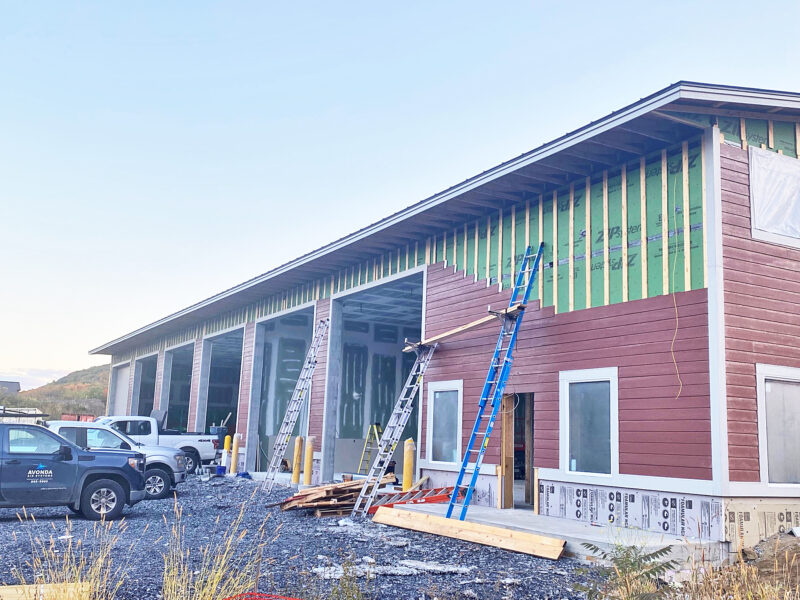Answers to frequently asked questions about the town garage solar project
What is the purpose of the solar project at the Town Garage?
The solar project will provide 100 percent of the electricity used by the town garage, and approximately 93 percent of the electricity used by the town hall, library, senior center and the fire and rescue station (which the town pays via the annual allocation to Charlotte Volunteer Fire and Rescue Service).
What will the solar project cost?
The town received two bids. The lower bid was from SunCommon, which has a project cost of $282,510. If Article 1 is approved by voters, the town will contract with SunCommon for this project.
Has mounting solar panels always been planned for the roof of the new town garage?
Yes, from very early on, based on input from the energy committee and others who helped in designing the town garage, it has been planned that the garage would be “fossil fuel free.” The building will be heated with a geothermal system and heat pumps. The electricity used by these systems will be offset by the roof-mounted solar system. However, the solar project was always considered a separate project because it benefits more than the town garage, and it was not included in the bond for the town garage approved by voters on Aug. 9, 2022.

Will the solar panels power the town buildings directly?
No. The town will receive credits from Green Mountain Power for the power generated by the panels; this credit will partially offset the cost of electricity used by the town buildings.
Will the solar panels still provide power when the grid goes down?
No, they won’t. If the grid goes down, a portable generator will be used to power the town garage. The town hall, senior center and the fire and rescue station each have their own generators.
How will the project be funded and financed?
The Inflation Reduction Act of 2022 allows municipalities to receive a rebate of 25-30 percent of the cost for solar projects producing less than 1 megawatt. For the remainder of the cost, the town discussed preliminary terms with the Vermont Bond Bank that includes a below-market rate and 10-year term. The loan is subject to credit review and approval by the Vermont Bond Bank. The bond bank has stated that the rebated amount will be applied directly to principal upon receipt, and the interest charged will be based on the remaining principal.
What is the expected timeline for the project?
Construction will start in early 2024, and the system should be fully operational by the end of April 2024.
What maintenance will be required for the solar panels?
SunCommon recommends that the town have a service contract for monitoring the panels and making repairs. SunCommon has provided the estimated cost for this service, and for replacing inverters in year 15. These maintenance costs are shown in the spreadsheets on the town’s website.
What is the lifespan of the solar panels; how much will they degrade, in terms of energy production, over their lifespan; how will the panels be disposed of at the end of their lifespan; what is the cost of disposal?
SunCommon has indicated the panels typically produce energy for 35-40 years. During the warrantied period of 25 years, their productivity is estimated to degrade by approximately a quarter of 1 percent to one half of 1 percent per year. The Environmental Protection Agency estimates that 75 percent of solar panel components (by weight) can be recycled. This includes glass, copper wiring, aluminum framing and plastic junction boxes. It’s difficult to estimate the cost for disposal in 40 years — but efforts are being made to increase the percentage of panel components that can be recycled.
Why not use ground-mounted panels that can face directly south, which would capture more solar energy?
Ground-mounted panels would take up space which could otherwise be available for other purposes. The available space near the Town Garage is limited and may not be sufficient for the 8,000 square feet that the roof provides due to the wetland, the wetland buffer and the septic system. Preserving the space near the garage for future municipal needs seems prudent. Also, the permitting process for a ground-mounted system would be more complicated and lengthier, and the installation costs for ground-mounted panels are typically more expensive than roof-mounted systems due to higher permitting and material costs.
What is the break-even for this project?
If the rebate is 30 percent, the break-even point would be in 7.5 years. If the rebate is 25 percent, the break-even point would be in 10.5 years.
Additional information is on the town’s website.
